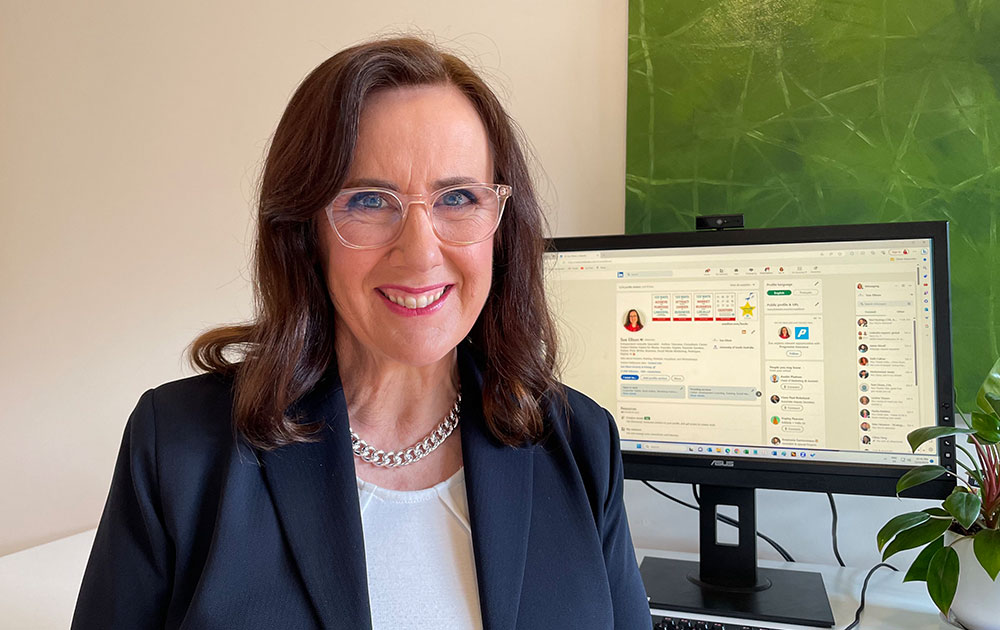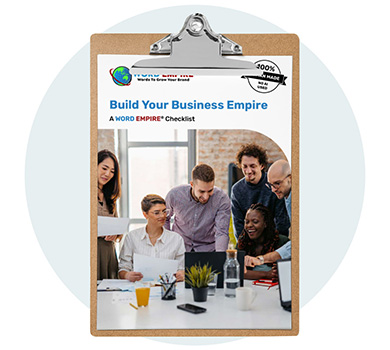LinkedIn Profile Hacks

By Sue Ellson
After joining LinkedIn in 2003, consulting on it since 2008 and publishing two books in 2016 and 2023, an online course in 2024 and hosting free monthly webinars since October 2021, it would be fair to say I know a fair bit about LinkedIn!
Here I will run through some of my favourite LinkedIn Hacks.
1. LinkedIn Profile URL
Did you know that if you change your LinkedIn Profile URL from first-name-last-name-numbers-and-letters to just your name (or your name with a dash – or other letters or numbers so that it is unique), that you will optimise your name in online search results? It also looks much better when you include your link on your resume, CV, email signature, website etc.
2. LinkedIn Newsletter
If you have at least 150 Followers on your Personal LinkedIn Profile or Company or School Page, you can create a Newsletter. This is like a LinkedIn Article on steroids. It will send a Notification to your Connections when you launch it and thereafter, it will automatically invite your new Connections and Followers to Subscribe. I love things that happen automatically.
3. LinkedIn Events
These are really only suitable for FREE events (because even if you contact people who register and ask them to book and pay, they probably won’t), but they do allow you to invite 1,000 of your Connections per week to attend. Whilst some people have turned off receiving event notifications, it can be a helpful way to remind people that you are showing up online.
4. LinkedIn Collaborative Articles
Whilst these are generated by Artificial Intelligence (choose your topics here), if you add comments to three or more Collaborative Articles in one topic in 90 days, you can earn a ‘Top Voice’ Yellow badge for your LinkedIn Profile.
5. LinkedIn Headline
This is the section underneath your name and is the top spot for the keywords that you want to optimise on LinkedIn. I have a formula I recommend. A three to five word label that describes you at the beginning as this is what will appear in the Newsfeed or search results, a string of keywords related to what you want to optimise and a personal interest emoji as a talking point at the end. There is no value in repeating any words or including a value statement. The goal is to appear in search results first and then describe your value in other sections.
6. Current Job Title
The second most valuable place for keywords is your current job title. If you are not working and you appear to be ‘unemployed’ right now, this can reduce your chances of appearing in LinkedIn search results. I therefore suggest that you create a current job called ‘Career Research – Job Title Keywords) and list the employer as ‘Various’ and then use the Description box to provide some more information.
This Experience could start in the month when your previous role ended. You may also like to mention what you have been doing and you could include formal study, micro credential courses, event attendances, networking, research, coaching, special projects (personal or professional) travel etc.
7. Skills
Did you know that you can have 50 Skills listed on your LinkedIn Profile? and you can nominate your top five skills in the About Section and add Skills to each of the Experience, Education, Licenses and Certifications and Projects sections? Remember that we are moving away from job titles and fancy organisation names to a skills based market.
8. Encouraging Conversations
Like all social media platforms, LinkedIn wants more people on the platform, more often and for longer. So, if you start reacting to and commenting on other people’s content in the Newsfeed, they will appreciate it. Likewise, this helps the content travel further. You need to be willing to ‘listen’ as well as ‘speak’ and keep conversations going online.
Polls are still performing quite well too. Don’t forget to click the Notification Bell on your VIP Connections and Company Pages so that you can curate your Newsfeed and support the content that is important to you.
9. LinkedIn Premium
As an individual, if you have not fully completed your LinkedIn Profile (I mean every section in detail), in my view, there is not a lot of value in purchasing a Premium offering. However, one of the features I do like is the Auto Responder you can set up for any messages you receive via LinkedIn. I have mine set up to say that I will respond within 24 hours to a message and here’s something you can look at in the meantime.
10. Get a Copy of your Data and Abide by the User Agreement
Did you know that all social media platforms allow you to download your data? I recommend that you do this at least every six months and you can request it on LinkedIn here. Likewise, it is a good to read the LinkedIn User Agreement, especially Section 8 – the do’s and don’ts and the Professional Community Policies. Essentially, you cannot use external tools or external people to assist you with LinkedIn, particularly if they are in another geolocation.
Finally, I encourage everyone to keep your LinkedIn Profile up to date, systemise your engagement and content creation strategies and download your data every six months.
If you can record your statistics every three months (Connections, Followers, Profile Views per 90 Days, Search Appearances per 7 Days, number of votes for Skills and number of Recommendations given and received), you can see if the platform is working for you.
If I had a magic wand, I would make sure that everyone on LinkedIn had a fully completed and optimised LinkedIn Profile. I believe that the future of work is work (not jobs). We need to be able to use technology to attract aligned gigs.
LinkedIn can really help.
Quick questions welcome at sueellson@sueellson.com
Watch FREE webinar recordings

